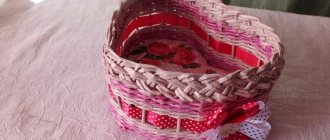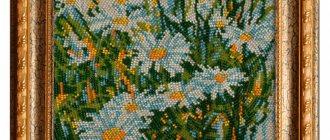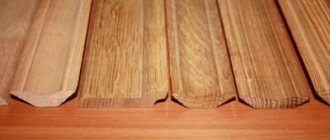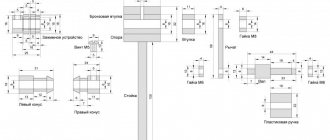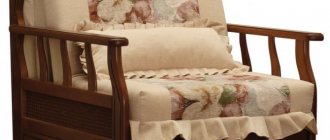How to make a chair for a summer house with your own hands + drawings and photos
Using ordinary screws and boards, you can make a chair for a summer house with your own hands, which will be as comfortable as store-bought furniture.
Do you want to buy a wicker rattan lounger or a plastic chair? You shouldn’t spend money right away, because simple and at the same time comfortable pieces of furniture can be made from natural wood with your own hands.
We invite you to familiarize yourself with simple and step-by-step instructions for self-assembling a country chair from wood boards. But first, you should decide what kind of furniture you would like to see on the site of a country house.
Useful tips
Making your own furniture is a very exciting activity. If the process is happening for the first time, make the most uncomplicated chair with clear lines and simple geometry. It will be easier to work, and the result will be neat.
When you have experience in carpentry, you can surprise family and friends with unusual shapes. A handmade round chair is effective and practical in any interior. Another easy way is to make a chair from a car seat left in the garage.
By being creative and following the instructions, you can make a chair with your own hands that will be used for its intended purpose for many years. In addition, a product made on their own will become a source of pride for the owners and a reason to brag to friends.
Varieties of design
There is a huge variety of modern do-it-yourself wooden garden furniture.
Folding chairs
Recently, chairs with a folding mechanism have become quite popular. And the reason for this is such advantages as:
- compactness - they are quickly and easily transformed into flat wooden plates, making them convenient to transport and can be stored in any room;
- convenience – the design of a folding chair allows you to sit comfortably in it, especially if there are removable soft covers.
Folding chair for a summer residence
Folding chair for a summer residence 2
Sun loungers
The relaxation area will be perfectly decorated with wooden chaise lounge chairs for a summer residence, on which you can sit, half-sitting or even lying down, sunbathing, reading a book or enjoying the sounds of nature.
Sun lounger for the garden 2 Sun lounger for the garden
Garden furniture made from pallets
Wooden pallets are often left over after purchasing various building materials. Pallets are widely used in the manufacture of various garden furniture, and if you also have them, we suggest making chairs with your own hands that will certainly be suitable for your dacha. Wooden pallets can also be purchased in the store - their price is very affordable compared to other wooden raw materials.
Furniture made from pallets Chairs made from pallets
Hemp chair
This is the simplest and most unpretentious way to equip an area with places for gatherings. Even a beginner can cope with this task, without any special financial costs and with a minimum number of tools.
In fact, the stumps themselves will act as a chair. It is enough to cut several logs of the required size, dig them into the ground or place them on a flat surface, having previously treated the wooden surfaces to make their appearance aesthetically pleasing. For comfort, you can sew soft pillows and place them on the seat as a knee pad.
Furniture made from hemp Furniture made from hemp 2
Country house chair made from pallets
You can make such a design with your own hands, spending only a few hours. During the work you will need the following:
- wooden pallets (you can buy new ones or disassemble old ones that are no longer used);
- hammer;
- nails;
- sandpaper;
- fastenings;
- primer.
Pallet chair
Step-by-step instruction
Step one: in this case we will need to take two pallets of the same size, which will then be divided into parts. Moreover, if the design involves the presence of additional decorative elements, then more pallets will be needed.
Divide the pallet into parts
Step two: the surface of the wood should be thoroughly sanded.
Sanding the surface of the pallets
Step three: first you need to connect the parts of the seat and backrest together. At this stage, you can make a small cut to get the slope of the back.
Connecting the back and seat
Step four: it is better to fix all the parts with screws, because the connection made from nails is not very reliable.
Conditions for use of country furniture
In order for hand-made furniture to serve you for a long time, the design must meet certain parameters.
This chair is ideal for relaxing in the country and looks great in the garden.
| Transportability | As a rule, wooden chairs are used for relaxing in the fresh air, in the open air. In case of a sudden change in weather conditions, it is convenient to move the chair under a canopy if it is transportable. |
| Selection of quality raw materials | One of the important conditions in making a chair yourself is hardwood. Despite the high pricing policy, the design result, thanks to high-quality material, will be excellent. These species include: aspen, oak, pine, cedar. |
| Maximum weather protection | Exposing the chair to direct sunlight or heavy rain for a long time leads to a deterioration in its external condition. Preparation for protecting the finished chair begins at the earliest stages of design. High-quality, dry lumber is the key to success. If you initially purchased low-quality raw materials, dry the boards while working. Sand, saturate the workpieces with an antiseptic, and apply hot drying oil. At the final stage, after the finished product has completely dried, it must be opened with varnish. The material to get started is ready. |
Making a garden chair is not difficult; there are no complex connections or parts.
How to choose material
Creative garden furniture
In order for pieces of furniture to blend harmoniously into the landscape, it is worth choosing natural wood. To do this, you can use branches, trunks or tree roots, which will help create unique works.
Natural wood has a variety of shapes, which makes it possible to produce original furniture items with minimal processing. When choosing materials, you should be creative and try to see the unusual in ordinary things.
If you want to decorate your garden with not only fashionable, but also reliable items, take a closer look at a table with a base made of concrete blocks, bonded with cement mortar and then tiled. To make a tabletop, you will need 5*10 cm bars, fixed with glue in a frame. The strips forming the surface of the table are attached to the resulting holes.
Exquisite wicker garden furniture
Stylish and economical products can be obtained from branches of flexible tree varieties. Nothing can compare in beauty to wicker garden furniture. If you do not have experience in this process, stop at bird cherry branches, which are easy to process and pliable.
The most interesting ideas
- If we talk about such a piece of furniture as an armchair and its drawings, it is difficult not to recall the design of the architect Ferdinand Kramer. His DIY Knockdown Furniture was invented 50 years ago. The architect focused on utility and a high degree of flexibility, with a pragmatic focus on mobile living conditions. An armchair made of laminated wood, which can be made using the drawings of this designer, is easy to assemble and disassemble, so it is especially convenient for transportation, which is very important when the furniture is not left at the dacha for the winter.
- Having a thin geometry and designed on a computer, a classic chair with traditional design, ergonomics and aesthetics, standing in a garden in the country, will create an atmosphere of incredible coziness and traditional comfort.
The design of this chair is well optimized and its intricate parts are easy enough to cut. The seams are glued, all parts are easily connected if grooves are provided.
- In modern parlance, the term chaise longue can refer to any lounge chair. The literal translation of this name is “long chair.” It is convenient to sunbathe on a sun lounger near the country pool and relax in the shade of the apple orchard. This furniture is easy to produce by carefully studying the drawing.
- The first mention of a rocking chair dates back to 1766. Many people love this chair because of its soothing, gentle movements. The human brain associates these movements with safety and comfort, a mother's hug or a cradle. Gentle rocking has been shown to relax the body and allow people to sleep better. A rocking chair can be made based on the drawing of one of its many models.
How does it swing?
Most home craftsmen make rocking chairs according to ready-made drawings, but prototypes often turn out to be developed and tailored to a specific person, and an exact replica is not so convenient. Therefore, before making a rocking chair, it is necessary to obtain at least initial information about its kinematics.
The CG of an upright person of normal build is located on the border of the lumbar and sacrum on the inside of the spinal column. In a sitting individual, it will blend somewhat forward and even less downwards.
In the chair-seat system, the overall CG shifts back almost to its original position and a little further down. The downward shift of the general CG for the design of a rocking chair is not particularly significant and we can assume that the projection of the general CG onto the supporting surface (floor) is approximately the same as that of a standing person.
In the future, the resulting error can be easily compensated by final balancing of the chair, see below.
The vertical location of the central center relative to the central center has a much stronger effect on the stability and comfort of the rocking chair; the latter is also a determining factor when designing rocking chairs on runners with variable curvature.
If the CG and CO coincide, this is an indifferent equilibrium: for any physically possible tilt of the chair, the projection of the CG on the floor falls on the point of contact of the runners O, pos. 1 and 1a in Fig.
The chair does not rock, and if you lean back too much, you will instantly somersault with the risk of breaking your neck. Fortunately, an exact match between the CG and the CO is only theoretically possible.
If the CG is higher than the CO, then its projection, at any inclination, “runs” outward, backward or forward, from the point of contact. At the slightest tilt, a tilting moment Mo occurs (positions 2 and 2a), and the rocking chair turns out to be unstable.
To avoid such a situation for a family rocking chair, it is designed and balanced for the tallest, heaviest and pot-bellied rider possible so that its CO is 450 mm or more higher than the CO. Then, when the chair is tilted, the point O will “run away” from the CG projection, the restoring moment Mv will constantly act (positions 3 and 3a) and the chair will not tip over when rocking within acceptable limits.
For those who are smaller, the excess of the CO over the CG will be too large, and the swaying will be harsh, but this can be easily compensated for by pillows under the back and seat.
In general, the lower the elevation of the CO above the CG, the softer and smoother the swaying, but the likelihood of capsizing, suddenly straightening up and standing up in a chair, is higher. Therefore, it is better for novice carpenters to set the CO exceeding within 600-700 mm.
There is no need to drag your own pillows with you into a chair on runners of variable curvature: it will itself rise to the position of greatest comfort. At the same time, the big guy will lean back more, and the slender one will sit straighter.
When swinging backwards, the point O will run away from the CG projection the further, the greater the angle of inclination, and it will simply not be possible to swing until it capsizes. And if you “pump” forward, which is actually difficult, the chair will smoothly drop the hyperactive person onto the floor: where should you rest? Go do something.
To construct a profile of runners of variable curvature, the radius of the generatrix of the circle (it is determined as in the previous case) will have to, firstly, be rotated several times by a fixed angle α; usually take α = 10 degrees.
Secondly, to build the rear branch of the runner, R is increased at each turn according to the law of geometric progression with the index k = 1.02-1.03. That is, it will be (see position 4 in Fig.) R1 = kR; R2 = kR1; R3 = kR2; R4 = kR3, etc., if required.
Actually, R changes according to some trigonometric function, but for furniture accuracy and the size of the rocking chair, it is more convenient to replace it with a progression, so it’s easier to calculate.
The construction of the anterior branch is carried out at a constant R, but with each rotation of the generatrix of the circle, the CO is raised vertically (ibid., in position 4 of the figure).
The initial elevation Δh1 is taken equal to 2-3% R, i.e. (0.02-0.03)R, and the subsequent ones also follow a geometric progression with the same indicator as for the posterior branch. Δh1 in this case is a fairly critical value; its smaller value should be taken for thin people, and its larger value for fat ones.
Finally, the resulting points are connected using a pattern with a smooth curve. Do not be embarrassed if the tangents to it turn out to be not perpendicular to the radii: in order for the chair to be stable, at each moment of rocking it should be on the opposite slope. When constructing, it is advisable to take the scale no smaller than 1:5.
How to do it at home?
Making a rocking chair with your own hands will still be possible for those people who have basic carpentry or welding skills, depending on the chosen master class.
On skids
The easiest way to make a homemade chair on runners is from an ordinary old armchair or chair. In fact, all that remains is to add the runners themselves, securely fasten them to the legs and, possibly, sew a cover. In addition to the chair itself on legs, you will need runners, a screwdriver, screws, a drill and sandpaper. To give the rocking chair an aesthetic appearance, paint and a brush will be useful. The runners themselves are cut out independently into shape using a pattern, or they are ordered from a craftsman.
It is important that the gap between the legs is 20-30 centimeters less than the length of the runners. At those points where the chair is fixed on the legs, holes are drilled, after which the runners are “fitted on.” If the result is positive, the latter can be sanded with sandpaper and painted in several layers.
The finished “skis” are put on the legs and fixed with screws in the already prepared holes
If the result is positive, the latter can be sanded with sandpaper and painted in several layers. The finished “skis” are put on the legs and fixed with screws in the already prepared holes.
Pendulum
An excellent pendulum rocking chair is made on the basis of bearings. Compact and durable design creates even swing and is ideal for outdoor use. For manufacturing, it is necessary to prepare two steel strips with dimensions of 40 by 4 millimeters and 60 by 6 millimeters, as well as profile pipes with dimensions of 20 by 20 millimeters and with a wall thickness of two millimeters. The movement of the rocking chair can be ensured by 8 bearings, the outer diameter of which is 32 millimeters, and the internal diameter is 12 millimeters, as well as 8 bearing cages. They are created by hand on a lathe, or cut from a tube. Finally, you can’t do without a pair of garage hinges and bolts with nuts size M12.
In order to minimize welding, profile pipes can simply be bent using a homemade jig. To avoid making mistakes, it is better to first apply markings every 100 millimeters. The entire frame of the rocking chair is made from a profile pipe, that is, the support part, two sidewalls, the seat and the back. As a rule, for a standard size of outdoor furniture it takes about 20 meters. From the strip and profile, parts are created that regulate how much the back of the chair tilts, in the amount of 2 pieces.
A steel strip measuring 6 by 60 millimeters is cut into two equal parts. From it, as well as bearings and bolts with nuts, pendulums are created in the amount of 4 pieces.
On springs
It is not recommended to make a spring rocking chair with your own hands, since this mechanism is very complicated to implement. The design has a powerful and motionless base, above which there is a large spring. It is she who is responsible for rocking the soft seat mounted on top. It is much easier to make a hanging rocking chair, which will decorate both the summer cottage and the children's room.
The easiest way to make a homemade swing is from a hoop with a diameter of 90 centimeters, a piece of thick fabric with dimensions of 3 by 1.5 meters, non-woven fabric, 4 metal buckles, 8 slings and a metal ring, from which the chair itself will be suspended.
The hoop is either created independently or formed from a metal-plastic tube or bendable wood. First of all, a pair of equal squares with sides of 1.5 meters are formed from 3 meters of fabric. Each of them is folded 4 times, after which a circle with a radius of 65 centimeters is cut out of the workpiece. The blanks are marked with an internal contour and holes for slings.
At the next stage, both blanks are ground together, leaving a hole for the frame. The remaining free allowance is cut with teeth, after which the finished cover is turned inside out and ironed again. The hoop itself is covered with the selected filler, cut into strips with a width of 6 to 8 centimeters. The frame is inserted into the case, both parts are connected to each other. The cover is filled with strips of padding polyester sewn to the fabric with a hidden seam. The sling is cut into 4 two-meter pieces, the edges of which are melted on both sides. The slings are pulled through the patterns and stitched several times. Buckles on the free ends allow you to adjust the height and inclination of the rocking chair. All slings are assembled and fixed on a metal ring.
How to make a hammock chair from a metal hoop is described below.
Do-it-yourself outdoor chairs for your garden
Preparatory stage
First you need to select a drawing. If this is your first time making country furniture, then the simpler the drawing you choose, the better. In the version presented below, the drawing is very simple, but the finished pieces of furniture will be stable, beautiful and durable. The drawing shows the main dimensions of the chair, selected to suit the parameters of a person of average height. If desired, the size can be recalculated in your own way. After your drawing is ready, it’s worth counting the number of materials and purchasing everything you need. In our case, for the frame assembly we will use a board with a cross-section of 3*1.5 cm. To finish the seat and back, use boards with a cross-section of 2.5*10 cm. Wood screws with a length of 4 cm will be used as fastening elements.
The process of cutting the main elements
Using a miter saw will make it easier to cut the edge of the board at both a bevel and a right angle. In accordance with the drawings, you can calculate the configuration of the structural elements and cut the required number of elements from the boards. For cross-cutting and longitudinal cutting, use a circular saw. To make a curved cut, use an electric jigsaw. To cut rectangular notches in boards, you should properly use a bow saw or an electric jigsaw. After cutting, small chips or, conversely, fibers that stick out will be visible along the cut line. In order to avoid having to remove such effects on finished pieces of furniture upon completion of assembly, immediately at the end of cutting you should walk along the edge of the cut with sandpaper.
Manufacturing process
How to make a wooden chair for a summer cottage with your own hands:
- Screwing in a self-tapping screw - almost all types of connections in a chair will be made using self-tapping screws, and therefore it is worth knowing how to screw them in correctly. Fixing screws is carried out with primary drilling of holes having a diameter of 0.2 cm. If you screw in self-tapping screws without first drilling holes, cracks may appear. Under the self-tapping head, drill a countersunk to the diameter of the head, which will have a depth of 0.3 cm. The self-tapping screw is recessed into the countersunk just below the board surface itself.
- Front legs - make 2 elements that are shown in the diagram. In this case, the lower part of the element will act as the front leg of the chair, and a crossbar will be attached to the center of the recess. The upper part of the element will play the role of an armrest holder.
- Connecting the front supports into one unit - a transverse crossbar with a length of 0.7 meters is installed in the central recesses on the front supports. All types of connections can be made using carpentry adhesive and reinforced with 2 self-tapping screws on each side of the crossbar.
- Attach the armrest holders - this should be done overlay to the front supports, and then attach the upper parts of the side panels, which are 0.6 meters long. Maintain a right angle between two such elements. Fastening should be done using carpentry adhesive and 4 self-tapping screws for each connection.
- Rear legs - you should cut 2 parts from boards, like those shown in the diagram. The length of the legs should be 0.63 meters, and the end of the legs should be cut at an angle of 75 and 115 degrees.
- Fixing the rear legs - these supports should be placed outside the armrest clamps so that the cutting line coincides with their surface. The extreme point of the bottom of the rear supports should be placed flush with the rear edge of the armrest holder.
- Strengthening the rear supports - so that these legs do not move apart in different directions during operation, it is worth placing a transverse spacer between them and tighten the entire assembly using self-tapping screws, 2 pieces on all sides.
- Seat holder - the sheathing of this element will be attached to the horizontal holders, and they will be fixed with a straight edge on the transverse front brace, and beveled with an end - on the pre-mounted transverse brace of the rear legs.
- How to place the holders on the seat - the diagram shows the placement of 3 seat holders and their distance relative to each other. The elements are usually fastened using self-tapping screws.
- Rear supports and backrest - 0.61 meter long pieces of board are attached to the outer seat holders. Fixation must be done in such a way that the end of the backrest holder is level with the lower edge of the holders.
- Finishing the back - on top of the previously installed backrest clamps, fill the strips with a gap of 2 cm between adjacent boards.
- Seat - the seat strips are attached in the same way as the back trim strips.
- Armrests - attach pieces of boards with a length of 0.64 meters to the sidewalls, as shown in the diagram. Fixation is carried out using self-tapping screws and wood glue. Self-tapping screws are used at least 2-3 pieces for each armrest.
And now about how to finish making a chair for a summer house and garden with your own hands.
Completion of work
After the assembly is completed and the chair is ready, all that remains is to complete the finishing, after which the piece of furniture will become not only reliable, but also beautiful. Since the assembly was carried out using self-tapping screws, there will be recesses made for their heads on the wooden surface. The recesses should be filled with wood putty chosen to match the tone of the boards. The putty should be applied using a spatula and leveled immediately. Please note that when working with putty, it is worth remembering that these compounds are applied in a layer of no more than 0.2 cm.
After the putty has dried, the wooden surface should be thoroughly sanded. To do this, use a grinding machine with replaceable sandpapers. The sandpaper should be used alternately, changing the abrasiveness from 400 to 800. Please note that sanding furniture with this material by hand is inconvenient, because only a sanding machine can remove an even layer without making a hole. After the chair has been sanded, it should be cleaned of dust and soaked in 2 layers of drying oil, with breaks for the first layer to dry. Firstly, impregnation is required to reduce paint consumption, and also to make the wood more resistant to rotting. After the drying oil has completely dried, apply 2 layers of paint.
Is it possible to use varnish? So, when working with lumber, putty was used; stains will be visible through the varnish, and therefore, in our case, using a continuous layer of paint and varnish material is preferable. Such a modest and simple chair will look gorgeous both on the terrace of a country house and in the interior. The photo shows the final result, which will look exactly the same if all the assembly steps described above were completed correctly in the sequence in which they are described in the instructions.
DIY simple swing from an old chair
This model of a hanging chair or swing chair is good because it uses that part of the old chair that usually remains from it, namely the seat with a back, because chair legs, as a rule, are the first to deteriorate and break; restoring them is quite problematic
Of course, we sand the old part of the chair, and for aesthetics and durability we cover it with paint or stain. The most “difficult” part of making this swing chair is to make two boards with two holes in each to place our chair on and tie ropes to below. It is important immediately before attaching to center the boards under the chair so that your fifth point is in the center of gravity when sitting on the chair in a suspended state
Folding chairs with backrest
To make this copy, prepare in advance:
- two straps with leg lengths of 74 and 47 cm, respectively;
- 5-8 flat strips 32 cm long;
- 3 rods 43 cm each;
- fasteners.
Let's move on to the collection. Let's start by making the seat. To do this, use short self-tapping screws to secure the slats to the support rods at an equal distance from each other.
Let's move on to assembling the frame. Its main components are the protruding legs and the back of our wooden masterpiece. We select the part where the back will be and attach the slats to it to support the back; there is enough crossbar in the lower part for greater stability. The hind legs also have crossbars at the top and bottom.
So we have two elements that need to be fastened together. To do this, use bolts of any convenient diameter, drill through holes in both frames and fasten them together. We connect the front and rear frames of the chair with bolts and nuts.
Tip: Don't over-tighten the nuts, allow the inner frame to rotate freely, but don't loosen.
You've probably already seen similar photos of a folding chair; now this comfortable and practical piece of furniture will appear in your home.
Making a frame with your own hands
Before you make a chair with your own hands, you must carefully prepare for this process.
It is recommended to prepare in advance all the necessary starting materials and tools, as well as roughly study the instructions.
First, prepare all the tools and materials. Their list includes:
- wooden boards;
- jigsaw;
- drill;
- self-tapping screws 60 mm.
Every structure has a frame, because without it it cannot exist. Therefore, it is logical to start creating it first. Prepare as many boards as possible.
Sawing the legs and back
First you need to make the appropriate markings on the boards. Using a pencil or other similar means, draw the outline of the future legs of your chair. If you can't do it by hand, you can take a ready-made chair and use it as a template. Place its legs on the boards and trace.
Now you need an electric jigsaw. You can use the usual one, but, of course, this process will not be pleasant. Using a tool, cut out the legs according to the markings from the boards. The two back legs of the chair should be different from the front ones. To save your time and effort, make them long to the full height of the chair so as not to make the backrest elements separately.
The human factor plays an important role here. There is a high chance that you could have made a small mistake when cutting out the legs and they are slightly different. To do this, attach them to each other and remove any irregularities.
The next step is to make the upper part of the chair, namely the back. To do this, take the rear legs and two small bars that will serve as support bars. Install one of them at the seat level, and the other in the structure itself. Assemble the back using long screws and a drill. It is best to screw two self-tapping screws into each connection.
Before screwing in the screws, be sure to prepare the mounting holes. This is done so that when screwing in the screw does not go to the side, and also does not crack the wooden block.
Place all the legs in a vertical position and check that they are level and that your structure is not wobbly. If you have any problems at this stage, use a jigsaw to remove any rough edges.
Seat and armrests
Let's move on to the final stage. Take 3 wooden blocks the same length as the bottom crossbar in the back of the chair. Place them between all the legs to form the seat and primary frame. To strengthen the future product, make four wooden corners and secure them with self-tapping screws in each corner of the structure.
Now install the seat itself. To do this, cut out a suitable piece of plywood and secure it tightly to the surface of the chair using the same self-tapping screws. If you want a softer seat, you can use special textile tapes. They will also be used for the backrest.
For now, it looks more like a chair, because there are no armrests. Everything is simple here: prepare 4 bars, 2 of which should coincide with the length of the lower crossbars connecting the legs. The remaining two bars will connect the armrest to the bottom of the chair.
Now round the armrests and sand them. You can install additional crossbars on the back to achieve a greater level of structural strength.
The frame preparation stage can be considered complete. All that remains is to check all connections for strength.
Preparing for work
The main component in the preparatory stage is the presence of a list of tools and materials that should be in the master’s arsenal.
Necessary materials:
- “Dowel” (24x60 mm) made of cedar – 30 pcs.;
- Brass screws - 4.5x50 mm and 4.5x32 mm, 20 pcs.;
- Sandpaper;
- Thermostatic glue;
- Furniture varnish for coatings;
- Drying oil;
- Masking tape;
- Cardboard for stencil.
After preparing the materials for the wooden chair, you can begin directly assembling the product.
Required tools:
- Saw (circular);
- Plane;
- Manual frezer;
- Wood hacksaw;
- Screwdriver;
- Drill;
- Clamps;
- Ruler, tape measure, pencil.
Tools for work.
A preliminary calculation of measurements for the components of a cedar wooden chair is as follows. Dimensions are indicated in millimeters.
- Legs 4 pcs. (rear 2 pcs., front 2 pcs.)
- Two front legs – 20x254x787;
- Two rear legs – 20x76x533.
- The back of the chair is 20x279x914.
- Chair armrest:
- Support - 2 pcs., (20x127x406);
- Rear support – 1 pc., (20x76x610).
- Jumper – 1 pc., (20x51x589).
- Insert strips – 2 pcs., (12x20x254).
The parts that make up a garden chair.
Adviсe
- When choosing materials, do not immediately run to the hardware store. Take a closer look at what you have available. Perhaps you or your friend have had beams and boards lying around for several years that you would hate to throw away. Stumps and snags that interfere with the site can also become a unique item or part of it. Do you remember if you have any hunting trophies lying around on your mezzanines? Antlers, skins and other paraphernalia will fit very harmoniously into the interior of your recreation area.
- Pallets (pallets) can be bought for little money at construction sites, in stores or online. You'll save significant time on cutting and assembly with these versatile designs.
Decorating wooden furniture
An equally important stage in furniture manufacturing is decor. At the same time, it is not necessary to purchase expensive accessories for such purposes, because you can even use old, unnecessary things, pillows.
You can cover the back and seat with padding polyester, and stretch decorative fabric on top. Fasten the upholstery to a wooden structure using a furniture stapler. In addition, the back is sometimes decorated with buttons, which are covered with the same fabric. You can hide the marks from the staples with decorative edging or various laces.
Example of garden furniture design
At this stage you will have to show your imagination. You can decorate the surface using paint of different colors - this will allow you to get a unique product that suits your interior specifically.
Implementation of unusual ideas
Furniture made on site
To create interesting items for decorating the landscape, you can decorate tables, chairs and benches with beautiful original branches. Such furniture will become a wonderful and appropriate element of the garden exterior and will not leave any of the guests indifferent.
Another option for making a table for a summer house is to use a large cut of the trunk as a support and a horizontal cut of the butt as a cover. The horizontal cut is fixed on a shield made from parts of the trunk. To make the structure reliable, it must be supported with logs, the tops of which have been previously hewn off, and secured to support pillars.
Recommendations
Here are some useful tips that will make it even easier to make a chair from wood with your own hands. To begin with, let's say that before creating any structure made of wood, you should carefully think about how it will roughly look and what you want to see it as. This will allow you to at least approximately determine how much of a particular material you need.
Another important aspect is that you should not neglect such a thing as drawings. For some reason, many people do not pay enough attention to them, which is why they end up with crooked chairs and armchairs. In this matter, everything should be thought through to the smallest detail and the parameters of each detail should be checked. It would not be superfluous to say that it would be better to use a circular saw for cutting longitudinal parts, and a jigsaw for transverse parts.
Another important issue concerns the connection of the chair elements. Everything is quite simple here. In connections where the main load occurs, it is better to use self-tapping screws or self-tapping screws. But in other cases, you can use adhesive or chopsticks made of wood. Choppers can also be used to secure the upper parts.
An important point will be the selection of materials for processing. But here everything will depend on how high-quality the wood is used. If it is “clean” and has no defects, then it will be enough to treat it with stain and apply varnish. But if there are stains on it and there are some defects, then you should putty them, then cover them with a primer and only then paint. Another important point is that you should not paint the wood right away. It must be pre-treated with drying oil. Otherwise, it will quickly be absorbed into the surface. Then there will be bald spots, which will ruin the appearance of the chair.
The process of making a chair with your own hands: step-by-step instructions
Creating Basic Parts
As a rule, work begins with a preliminary stage - preparing the main elements. Having a drawing with detailed tips will facilitate the further process of making a wooden chair with your own hands.
Scheme for creating a garden chair with your own hands.
The most complex and time-consuming process is the manufacture of the side supports of the seat. You need to make a full-size template of the side support on cardboard.
Drawing of the side support of a garden chair.
1) Draw the first side of the part, lifting the segment on the left, then the next two at the appropriate angle.
2) Mark a perpendicular segment, heading towards point A.
3) Mark point C, draw a cutout under the transverse tie.
4) Extend the bottom side with a line, marking an angle of 75 degrees, with the vertex C.
5) Draw an arc, measuring the angle at point D. The radius of the arc is 116 mm. Connect the points with a segment.
6) Using a square grid, we draw roundings between points A and B.
7) Place the resulting template on a wooden board. We outline the parts and prepare for cutting.
To cut straight sections, you need to use a saw; for cutting out shaped sections, a jigsaw is perfect.
Drawings of garden chair parts.
IMPORTANT! In order for the cedar board to chip less, the cutting blade of the tool must be carried out in the direction of the grain!
After transferring the finished drawing to the board, we will mark a similar one according to the first diagram, using the already cut out part.
If you don’t have a ready-made armrest pattern, no problem! The circumference is not important.
1) It is necessary to make wedge-shaped supports for the armrests using a saw, bevelling the upper edges by 6 degrees.
To make it easier to connect parts, use a clamp.
2) Carefully screw the supports to the front legs. For fastening we use glue and screws.
3) We cut out the armrests and rear support.
4) Use sandpaper to clean the ends of the finished part.
5) Cut off the ends of the support.
6) Press the rear support piece against the backrest.
7) Mill the edges of the surfaces.
Attaching the armrests to the wedge-shaped support.
IMPORTANT! Glue plays an important role when making your own garden chair. Heat-resistant wood glue, unlike the common and frequently used PVA glue, will not lose its properties when exposed to high temperatures, moisture, and will not dry out or crumble. For this reason, to create a wooden product, we recommend using heat-resistant glue.
